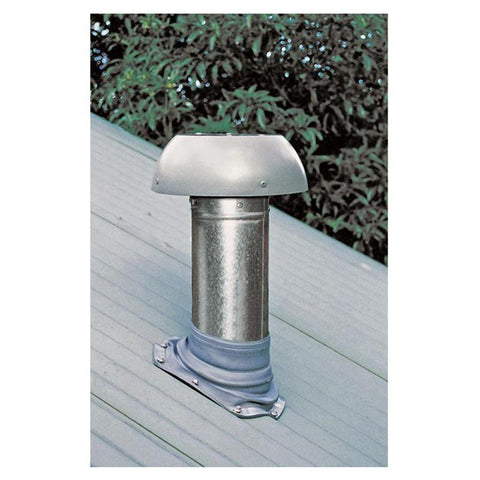Types of exhaust fan
Exhaust fans are not a linear bunch - not only are there different types, but there are different mounting mechanisms and, more recently, multi-function units too. We've tried to make the classifications as clear as possible but if you need more guidance, please get in touch.
Ceiling-mounted
Ceiling mounted fans, as the name suggests, are on the ceiling. These are probably what you think of when someone says bathroom exhaust fans. There are standard extractor only units, as well as handy combined units. 2-in-1 fans with lights, or even 3-in-1 with a heating element too. Ceiling fans have the fan built until the unit you can see and usually push air into the attic or out through the roof.

Roof mounted
A roof-mounted fan is installed in the ceiling of a room, but it extends above the roof. You can see a roof-mounted fan from the exterior of the home. Roof-mounted fans typically work to ventilate attics, keeping the humidity down.

Inline
An inline fan sits flat or slightly recessed into the air duct itself. Inline exhaust fans are typically powerful options and are often used commercially, too. These can be positioned in the wall or ceiling, differing from traditional wall or ceiling mounted fans by the fact they can push or pull air out. In an inline fan you won't usually see the fan mechanism or blade as these set in the duct itself, sometimes quite far up.

Wall-mounted
Wall-mounted fans can be a cost-effective way to ventilate a room, particularly if the room has an exterior wall. The fan is mounted in the wall with a duct pumping air through the outside wall of the house. Typically, people use a wall-mounted fan when there's no way to vent to the attic.

Window
Similar to a wall-mounted fan, but mounted into the pane of the window. Window extractor fans work best when you do not have enough room or the ductwork for an exhaust fan.

Range hood
An odd one to include but we get a number of questions here. This is the exhaust fan that typically sits about your stove or cooker. It provides strong, localised extraction. For the avoidance of doubt, this is a specialist exhaust fan and only one an exhaust fan designed for the use around stoves should be used here.
